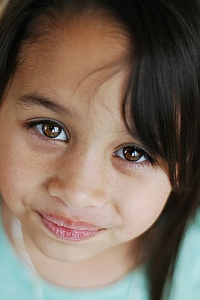Lighting is obviously an essential element of photography. Making photos, after all, is about catching those stray photons that bounce off of the world in a creative way.
Getting good lighting can be tough in any situation but indoor lighting can be especially tricky. Normal indoor light levels are fine for eyeballs but are usually pretty low for a camera. So what’s an indoor shutterbug to do?
The first time you shoot indoors, you may be a little surprised to find that the shutter speeds are so low that your images are coming out blurry or the colors are muted and drab. The solution: you need more light! Your first reaction may be to turn on your camera’s flash, but using a flash indoors isn’t as simple as using it for fill.
When light levels are low, the camera tries to use the flash as the primary light source. The flash will pump out a lot of light, wash out the subject, and leave the background in darkness. You may even get that lovely red-eye. That is not the look we want for a flattering portrait.

Her Maiden Eyes Divine. 1/160s @ f/1.8
Notice the window reflection in her eyes.
One of the best sources of light indoors is natural light shining through a large window or doorway. Where direct sunlight can be harsh and create dark shadows, sunlight that comes through a window has been filtered and softened.
It’s less directional than direct sunlight and creates softer shadows. Also, the window itself will create large, beautiful catch lights in your subject’s eyes, adding a nice spark of life to the photo. The technique is simple:
- Position yourself between your subject and the window.
- Have your subject turn towards the window. You can get different effects by altering the angle of your subject. Facing the window straight on will provide even illumination across the entire face. Turning away a little will shadow part of the face giving more depth to the photograph. Turning 90 degrees to the window will highlight facial features and skin texture.
- Shoot!
That’s it! It’s really that simple. Shooting near a window, even on an overcast day, will give you enough light to prevent blur, bring out colors, and add a sparkle to your subject’s eye. Combine this technique with a shallow depth of field to create a truly striking portrait.









Thanks for the article.. Made me think a bit more about lighting, and I’ll have to try the window trick the next time I’m doing some portraits.